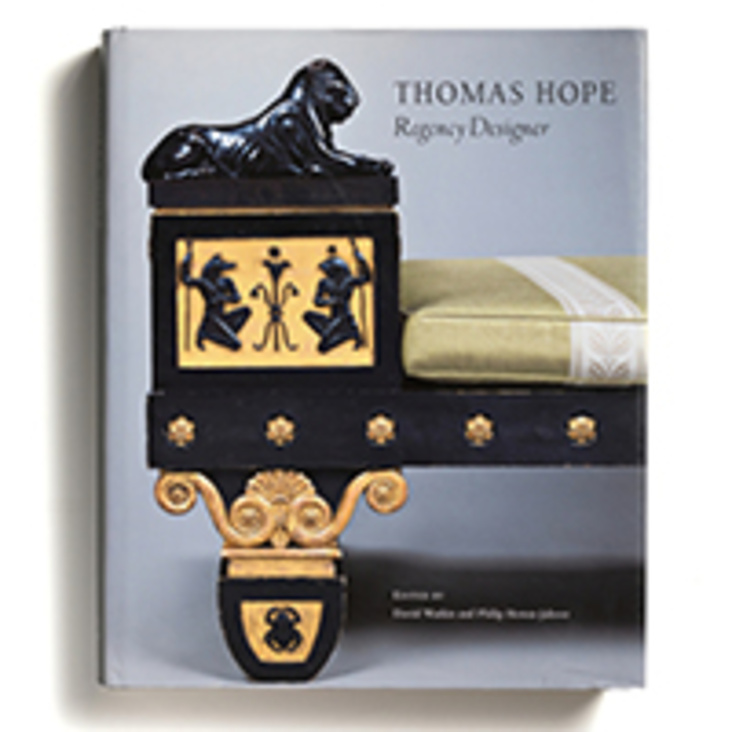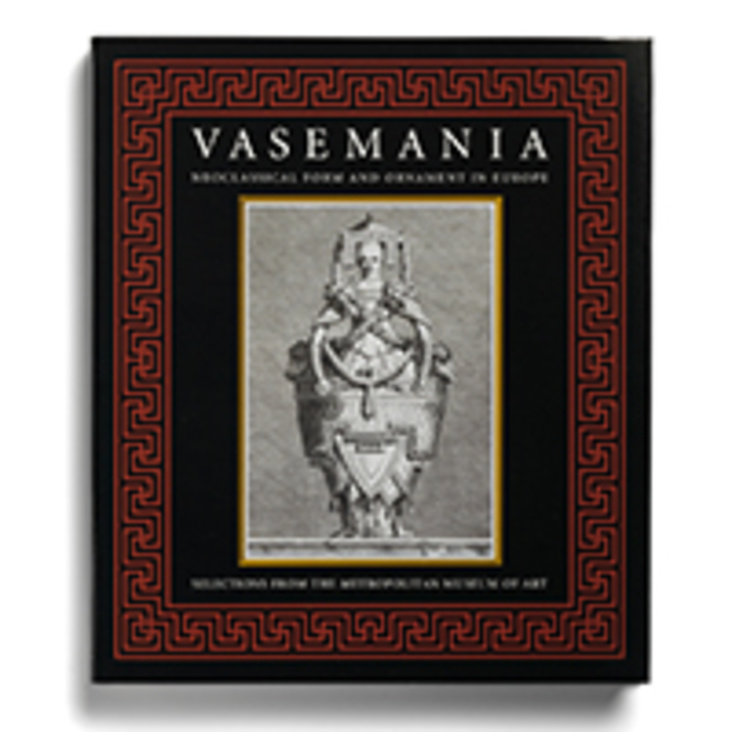July 17 – November 16, 2008
From July 17 to November 16, 2008, Bard Graduate Center presented Thomas Hope: Regency Designer. This exhibition was first on view at the Victoria & Albert Museum in London from March 22 to June 22, 2008; it was the second in a series of exhibitions organized by the Bard Graduate Center to be shown at the V&A.
Designer, patron, collector, and author Thomas Hope (1769–1831) is one of the major figures in the history of British design and had a profound impact in Britain. Hope helped shape and define what became known as the British Regency, a mode of design and decoration that continues to be influential. Despite the key role he played in the fields of interior decoration, design, and decorative arts, however, Hope’s significance has been largely overlooked. This exhibition examined his incomparable contribution and the remarkable works of art that he collected and that were created under his patronage. It also further extended the Bard Graduate Center’s international reputation for organizing exhibitions on underrecognized aspects of British design culture and history.
Thomas Hope brought together a curatorial team of leading experts in British architecture, decorative arts, and design. David Watkin, Reader in the History of Architecture at the University of Cambridge, England, has published extensively on the history of 18th- and 19th-century architecture. Philip Hewat-Jaboor, an art consultant and expert on Thomas Hope, was also a cocurator of William Beckford, 1760–1844: An Eye for the Magnificent, which opened at the Bard Graduate Center in 2001. Also curating was Daniella Ben-Arie, an independent scholar and researcher.
The exhibition conveyed how Hope fostered the Regency, a fascinating amalgam of decorative details, ornament, and influences from antiquity and British and Continental European art, architecture, and design. The approximately 140 loans on view revealed the outstanding scope and complexity of Hope’s contribution to the Regency. They included furniture, inspired by models from antiquity and designed by Hope; antique and neoclassical sculpture by Thorvaldsen and Canova, among others, as well as several Roman-Egyptian sculptures; a group of classical vases from the Sir William Hamilton collection; fascinating silver and other metalwork; and the exquisite portrait by Sir William Beechey, Thomas Hope, now in the National Portrait Gallery, London. All were shown against the brilliantly rich backgrounds used by Hope in his own home, Duchess Street, located in London. The exceptional loans came from the Benaki Museum, Athens; British Museum; Huntington Library Art Collections and Botanical Gardens; Metropolitan Museum of Art; National Gallery of Modern Art, New Delhi; National Portrait Gallery, London; V&A; and the Thorvaldsen Museum, Copenhagen, among others.
Thomas Hope, of Scottish descent, was born in Amsterdam to one of the wealthiest banking families in Europe. At the age of 18 he embarked on an extensive Grand Tour throughout Europe, Asia, and Africa that lasted nearly 10 years. Along the way he made careful studies of architecture and sculpture and assembled a remarkable art collection. He moved to London in 1794, fleeing Amsterdam ahead of the French revolutionary forces.
Hope installed his collection in the extraordinary interior of his Duchess Street home, designed by Robert Adam, which he would extend and remodel. Duchess Street became a hallmark of quality and craftsmanship and a full-scale remedy to what many 19th century theorists believed was the debasement of British design through the advent of mechanization. In 1804 Hope, like his contemporary Sir John Soane, opened his house to the public. The dissemination of his ideas expanded further in 1807, when he published Household Furniture and Interior Decoration, which contained line drawings of the house’s interiors and furnishings. Like William Beckford, he himself had designed and made furniture and works of art to demonstrate what he considered to be a new and purer design form. Also like Beckford, he published a novel that was very successful at the time, Anastasius, or Memoirs of a Modern Greek (1819).
A richly illustrated catalogue, Thomas Hope: Regency Designer, edited by David Watkin and Philip Hewat-Jaboor and published by the Bard Graduate Center with Yale University Press, accompanied the exhibition. The book contains previously unpublished material that reveals the multifaceted nature of Hope’s influence on the British Regency in 15 scholarly essays, from “Thomas Hope and the Neoclassical Revolution” (Philip Mansel, independent scholar, London) and “Thomas Hope’s Furniture: ‘A Delightful and Varied Significance of Shape and Embellishment’” (Frances Collard, Victoria & Albert Museum, London) to “The Tragic Mask of Anastasius/Selim: A New Introduction to Hope’s Novel” (Jerry Nolan, independent scholar, London) and “The Afterlife of Hope” (David Watkin and Frances Collard).










.jpg,732x732,c)





















